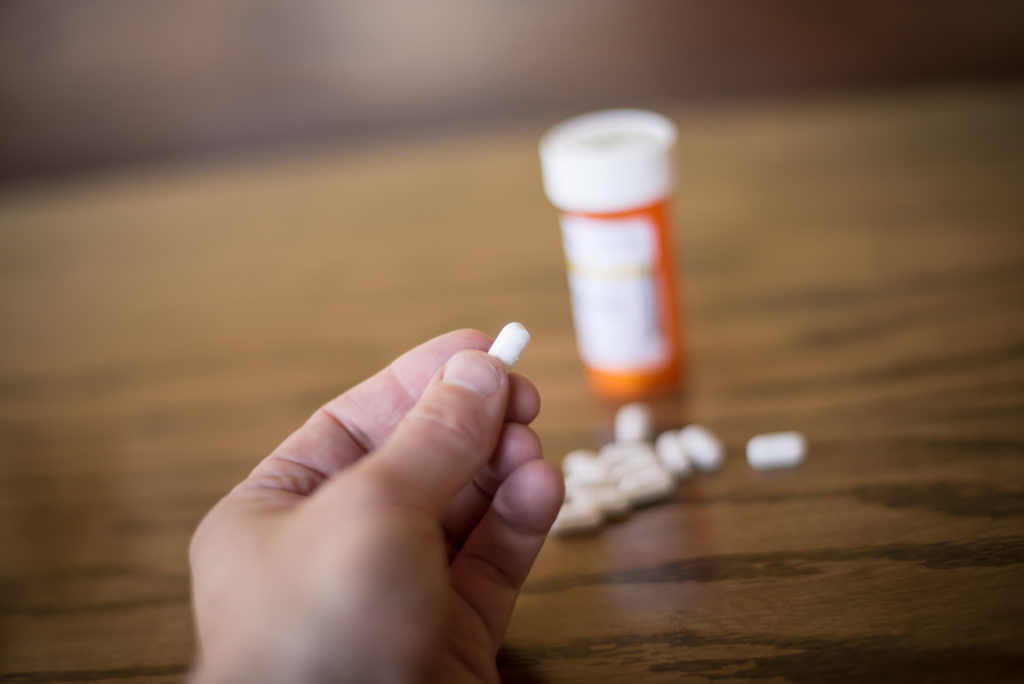Are drugs responsible for more deaths than we think?

Rising drug use in the United States is taking its toll on mortality rates, according to a study that has shown drug-associated deaths to be twice as high as stats suggest.
On average, in what the Centers for Disease Control and Prevention (CDC) have dubbed a drug “epidemic,” 130 people die each day in the U.S. from an opioid overdose.
Death by drug poisoning — or overdose — has surged since 2000 in all regions and among all ethnic groups.
In 2017, more than 70,200 people in the U.S. died as a result of a drug overdose. Some 68% of these deaths involved opioids, with the number being six times higher than that in 1999.
Opioids include prescription drugs, such as some pain relievers, and illegal drugs, such as heroin. Opioids induce euphoria and are potentially addictive.
However, what if drug records, which focus on death by overdose and drug-related mental and behavioral disorders, are not a true reflection of the death toll of the drug epidemic?
What if the drug epidemic is behind the negative life expectancy trends in the U.S.?
There were the questions that the researchers behind a recent study in PLOS ONE set out to answer. They investigated broader drug-related deaths in people in the U.S. between the ages of 15 and 64 years.
Among this subset of the population, 9% of deaths were drug-related, based on data on overdose rates. This figure has gone up by 4% in less than 20 years.
Speaking to Medical News Today, co-author Prof. Samuel Preston of the University of Pennsylvania in Philadelphia said, “Increasing mortality among working age Americans was not limited to drug overdose, and we believed that the rapid increase in drug use and abuse was likely to be implicated in mortality from other causes of death.”
The full effect of drugs on mortality
Prof. Preston and co-author Dr. Dana Glei of Georgetown University in Washington, DC, hold that drugs can kill in multiple ways beyond overdose.
These include infectious diseases, such as HIV and hepatitis, as well as circulatory illnesses, accidents as a result of impaired judgment, and suicide.
“People who are perpetual drug users have much higher mortality in general,” says Prof. Preston.
To investigate the extent of drug-related mortality, the researchers looked at data from the National Center for Health Statistics (part of the CDC), which included more than 44 million deaths in people aged 15–64 years in all 50 states over an 18 year period.
What they found was that drug-coded deaths, or in other words, those attributed to overdoses and drug-related mental and behavioral disorders, only reflected half of all drug-associated deaths.
“The most important causes of death accounting for the impact of drugs, in addition to those deaths coded to drugs on death certificates, were cardiovascular diseases and, for working age men, external causes of death,” said Prof. Preston.
Looking at 2016, for example, Prof. Preston and Dr. Glei found the total number of drug-related deaths to be 142,000, which is 2.25 times higher than the recorded 63,000 drug-related deaths, mostly attributed to overdose.
The effect of drugs on U.S. life expectancy
Prof. Preston and Dr. Glei found that after the age of 15 years, life expectancy for people using drugs dropped by 1.4 years for men and 0.7 years for women, on average.
Although this may not sound like a lot, researchers say that it is enough to affect life expectancy trends in the U.S. and to account for the recent reversal of life expectancy trends.
“We estimate that the impact of drugs is responsible for the reduction in U.S. life expectancy at age 15 since 2010.”
– Prof. Samuel Preston
“If one were to eliminate those deaths we estimate to have been caused by drug use and abuse, we estimate that life expectancy at age 15 in 2016 would increase by 1.4 years for men and 0.7 years for women,” Prof. Preston added.
The decrease in life expectancy more than doubled for those in West Virginia, the state that the drug epidemic has hit hardest. Here, among those aged 15–64 years, drug-associated deaths represented 39% of male deaths and 27% of female deaths.
Other hard-hit states include Massachusetts, Maryland, Pennsylvania, and Ohio.
The state with the lowest rate of drug-related deaths in both sexes was Nebraska.
While the study recalculated the extent of the drug epidemic in the U.S., it shed no light on root causes.
“For now, this research aims to paint a broad picture and get at the true extent of the drug epidemic in the United States,” says Prof. Preston.
Source: www.medicalnewstoday.com
